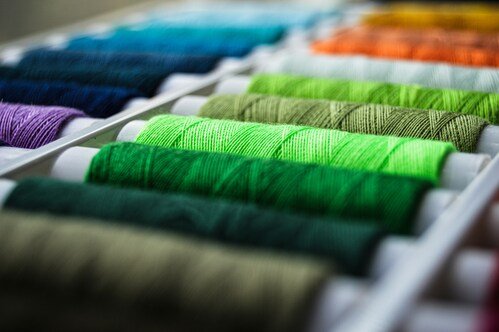Innovative textiles are pushing the boundaries of what’s possible in product design and functionality. No longer limited to basic clothing and upholstery, advanced fabrics now offer properties like enhanced strength, thermal regulation, and even electronic conductivity. These materials are at the forefront of engineering breakthroughs, transforming industries from aerospace to fashion.
This article will explore four game-changing textiles that are redefining performance, durability, and efficiency in a wide range of applications. By understanding these materials, designers and engineers can unlock new potential in their next generation of products.
Graphene-Infused Fabrics
Often hailed as a “wonder material,” graphene is a single layer of carbon atoms arranged in a two-dimensional honeycomb lattice. When integrated into textiles, it imparts a remarkable array of high-performance properties. Graphene-enhanced fabrics are exceptionally strong, lightweight, flexible, and highly conductive.
A study published in the journal ACS Nano demonstrated that graphene-based fibers can be stronger than steel and more conductive than copper, all while remaining incredibly light.
These properties make graphene fabrics ideal for next-generation smart clothing and wearable technology. For instance, their thermal conductivity allows for the creation of apparel that intelligently regulates body temperature, distributing heat from warmer parts of the body to cooler areas.
This is particularly valuable in high-performance sportswear, where maintaining optimal body temperature can directly impact an athlete’s endurance and comfort. Furthermore, its electrical conductivity opens the door for integrating sensors directly into the fabric, enabling garments that can monitor heart rate, muscle strain, and other biometric data without cumbersome external devices.
Lab-Grown Spider Silk
Spider silk has long been admired in the natural world for its unparalleled combination of strength and elasticity. It’s tougher than Kevlar and more flexible than nylon, making it a dream material for engineers. The challenge, however, has always been harvesting it in sufficient quantities. Spiders are territorial and cannibalistic, which makes farming them impractical. Today, thanks to bioengineering, companies have successfully replicated the genetic code of spider silk and are producing it in labs through fermentation processes using yeast, water, and sugar.
This biosynthetic spider silk retains the extraordinary properties of its natural counterpart. Its high tensile strength and lightweight nature make it a prime candidate for applications where durability is critical but weight is a penalty. For example, it’s being explored for use in creating lighter and stronger bulletproof vests, more durable ropes and cables for marine and aerospace industries, and even as a material for biodegradable medical sutures that are both strong and biocompatible. In fashion, designers are using it to create garments that are exceptionally resilient and long-lasting, offering a sustainable alternative to conventional synthetic fibers.
Phase-Change Materials (PCMs)
Phase-change materials are substances that absorb, store, and release large amounts of thermal energy upon changing their physical state (e.g., from solid to liquid). When microencapsulated and embedded into fabrics, PCMs create intelligent textiles that actively manage temperature. As the body heats up, the PCMs absorb this excess heat, transitioning from a solid to a liquid state within their microscopic shells. Conversely, as the body cools down, the materials release the stored heat, solidifying again and providing warmth.
This technology, originally developed for NASA to protect astronauts from extreme temperature fluctuations in space, is now widely used in consumer products. Bedding, for example, utilizes PCMs to maintain a comfortable sleep temperature throughout the night, preventing overheating or feeling cold. This leads to a more restful, uninterrupted sleep. Similarly, outdoor apparel, from ski jackets to running gear, incorporates PCMs to provide proactive thermal regulation. This allows the wearer to stay comfortable across a wider range of activity levels and environmental conditions without needing to add or remove layers.
Advanced Fiberglass Composites
While fiberglass has been a staple in industrial applications for decades, recent advancements have led to the development of highly specialized composite fabrics with superior performance characteristics. Modern composite textiles combine fiberglass with other materials, such as carbon fiber or aramid, or utilize advanced weaving techniques to create fabrics tailored for specific, demanding applications. These composites offer an exceptional strength-to-weight ratio, chemical resistance, and thermal stability that traditional materials cannot match.
For instance, Woven Fiberglass Fabric is engineered to provide high levels of dimensional stability and resistance to extreme temperatures, making it indispensable in the aerospace industry for components like insulation blankets and ducting. In construction, these composites are used to reinforce concrete, providing enhanced durability and corrosion resistance.
The marine sector also relies heavily on advanced fiberglass for building boat hulls that are both lightweight for fuel efficiency and incredibly resilient against the harsh saltwater environment. The ability to customize the weave and material blend allows engineers to create solutions that meet precise performance requirements for a multitude of industrial uses.
The field of material science continues to evolve, with innovative textiles leading the charge in enhancing product performance across nearly every industry. From the intelligent thermal regulation of phase-change materials to the incredible strength of biosynthetic spider silk, these advanced fabrics are not just incremental improvements; they represent significant leaps forward in what products can achieve. As research and development progresses, we can anticipate even more sophisticated materials that will further blur the lines between traditional textiles and high-tech engineering, paving the way for a future of smarter, stronger, and more efficient products.



